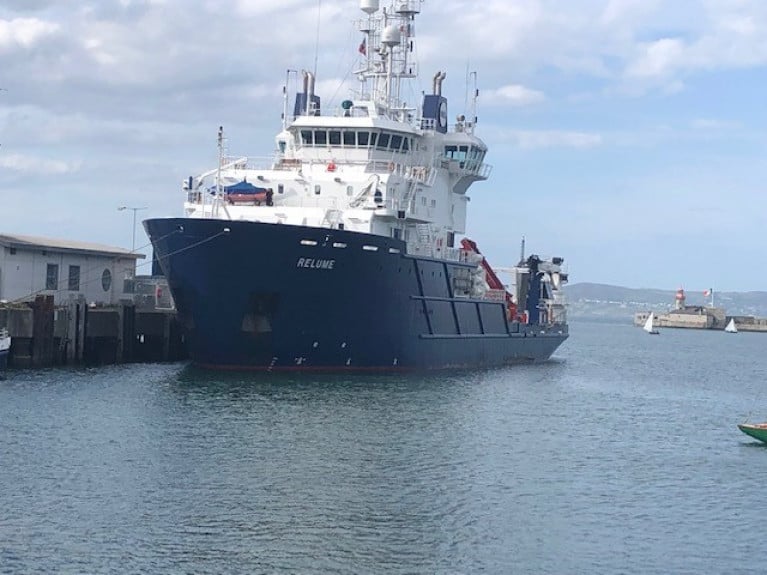Displaying items by tag: Arabian Gulf
Former Arabian Gulf Buoy-Vessel Calls to Dun Laoghaire Prior to Charter Work at Codling Wind Park Project
A former Arabian Gulf buoy-laying vessel, Relume that operated for the Middle East Aids to Navigation Service (MENAS) is the latest caller to Dun Laoghaire Harbour, writes Jehan Ashmore.
MENAS is the Gulf operations division of the London-based ‘International Foundation for Aids to Navigation’ (IFAN). This is the only independent Aids to Navigation authority in the world, with no country affiliation or national sponsor.
Relume was commissioned by MENAS in 2004 and was also designed with oil pollution recovery capability, hydrographic survey work and diving support, however the role of the buoy-laying vessel was to be brief.
The newbuild Relume quickly gained an enviable reputation as a combined offshore support/multi-role offhsore supply vessel (OSV) for owner /operator MENAS Marine Services Ltd (MMSL) also based in the UK capital.
By 2006 Relume relocated to the North Sea where MMSL have chartered the ship for many years and also for use on a global basis for offshore marine exploration, the oil & gas industry and emerging renewable energy sources.
A spokesperson for Dún Laoghaire-Rathdown County Council responded to Afloat's query as to the reason of the Irish call. “The Relume is berthed at No. 4 (St. Micheals Pier) for stores and crew change, following a last port of call, Thyboron, in Denmark. She is on her way to carry out survey work at the Codling Bank Wind Farm Project.” For more details, download Marine Notice No 39 of 2021 below.
At the Codling Bank is the jack-up rig, LB Jill (as Afloat previously reported), which can be observed on the horizon of Killiney Bay and off the Dublin and Wicklow coastlines.
Afloat has also confirmed from the ship agents, that the Relume will be on charter at the Codling Bank Wind Farm project for a two-month timeframe.
As of this morning, Relume had been expected to depart Dun Laoghaire Harbour where the Commissioners of Irish Lights (CIL) aids to navigation bouy-laying tender ILV Granuaile is homeported.
The ILV Granuaile of 2,625 gross tonnage was a prototype for larger newbuilds of the other General Lighthouse Authorities (GLA's) in addition MENAS.
The GLA's are Trinity House (England & Wales) which has the THV Galatea and the Northern Lighthouse Board (Scotland & Isle of Man) has NLV Pharos. Whereas MENAS had operated the 3,526gt Relume to service bouys and lighthouses in the Arabian Gulf and its approaches.
Both Relume and Granuaile were ordered from the same Dutch shipyard group, Damen at their shipyard, in Galati, Romania. The yard in 2000 launched the ILV Granuaile which went into service the same year and the DP Class 1 ship is currently on duty off the south-west coast.
Also not surprisingly, the vessels share similar hull dimensions, though the 82m Relume is slighty longer by 3m but both have a beam of around 16m.
As for the superstructure this differs, however Relume during MENAS based days used to have a pair of yellow funnels, likewise to ILV Granuaile sporting the livery of Irish Lights along with a white deckhouse and blue hull.
After a decade in service, Relume underwent a 12 month refit and upgrade of bow thrusters, Dynamic Positioning (DP) systems and installation of a new crane. Improvements were also made to accommodation and for personnel on board that was increased from 42 to 66. In addition the upgrade included revisions to office workspaces for clients.
In 2015 further work involved a machinery and accommodation upgrade to ensure continued competitiveness in the modern DP market.





























































